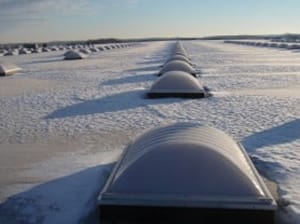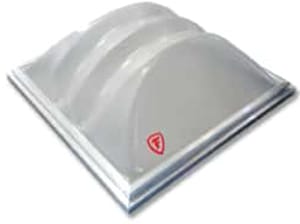commercial roof Skylight Installations in Plymouth
Skylight Installation Contractors Plymouth
When it comes to adding natural light and enhancing the aesthetic of commercial spaces, skylights are a popular choice. In Plymouth, Allweather Roof offers professional skylight installation services tailored to meet the unique needs of commercial properties. Choosing the right professional for skylight installation ensures durability and a seamless fit for your commercial building.
As you consider this upgrade, it’s crucial to weigh the benefits such as energy efficiency and increased property value. With Allweather Roof, you can trust that experienced professionals are ready to help you with your project.
Whether you aim to brighten an office space or enhance a dim corridor, installing a skylight can transform a commercial area. Through trusted services and expert advice, Allweather Roof can turn your skylight goals into reality.
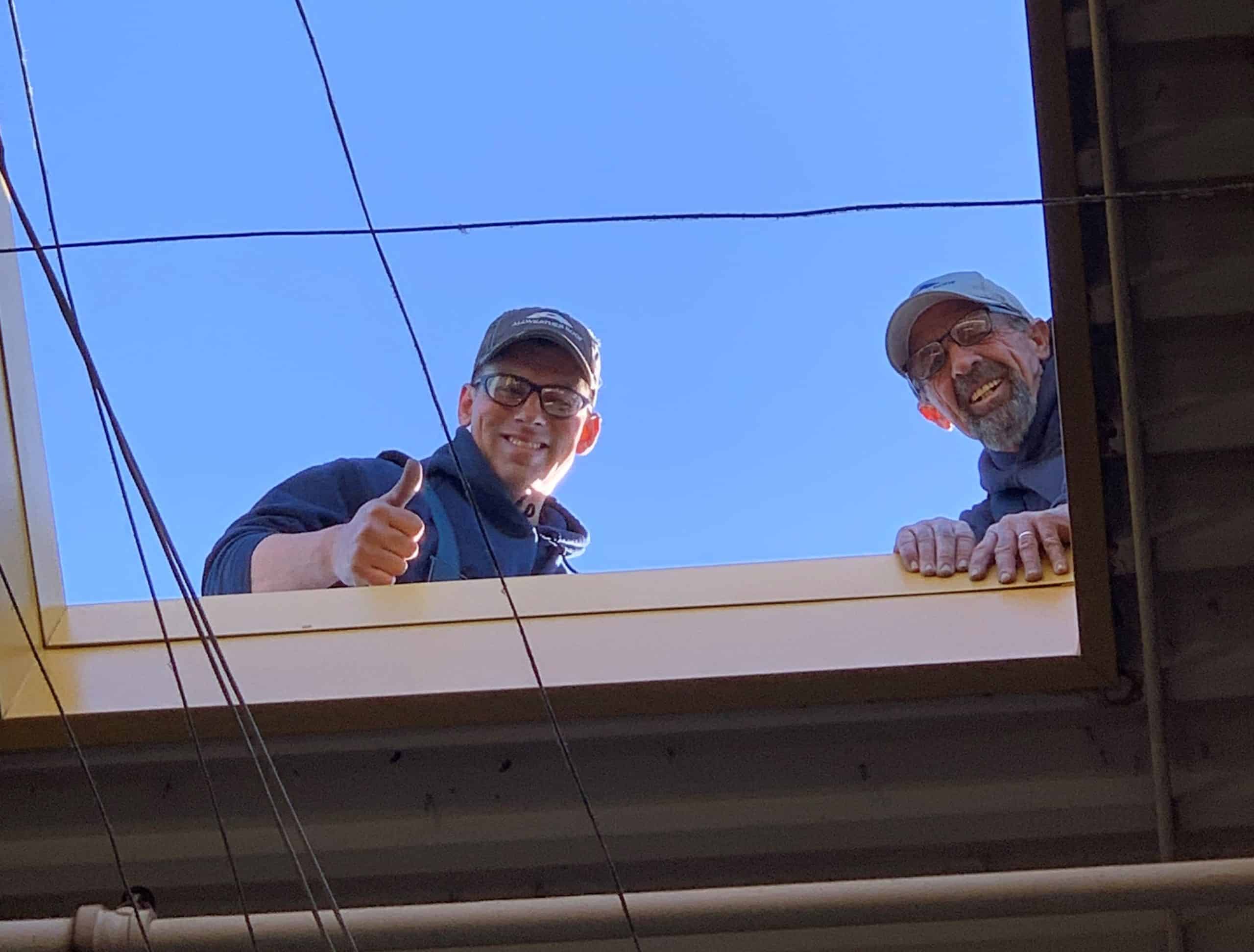
Assessing Skylight Options for Plymouth Commercial Buildings
When selecting skylights for commercial buildings in Plymouth, we focus on different types of skylights and the factors that impact their selection. Our goal is to make choices that enhance natural light, energy efficiency, and overall building aesthetics.
Determining the Ideal Skylight Location
We need to first consider the orientation and purpose of the room where the skylight will be installed. Rooms needing more natural light, like lobbies or workspaces, can greatly benefit from skylights. It’s important to evaluate the roof’s slope; steeper slopes often lead to better water drainage, preventing leaks. North-facing installations usually offer consistent light without much heat, while south-facing skylights can maximize solar gain but might need shading.
Obstructions, such as nearby trees or taller buildings, need assessment as they might block sunlight. For multi-story buildings, the skylight’s position relative to the upper floors influences its effectiveness. Additionally, understanding how heat and light interplay throughout the day helps decide the perfect placement for our skylight.
Types of Skylights
In Bloomington, various types of skylights can enhance natural lighting, improve energy efficiency, and create a better working environment. Each type offers distinct advantages suitable for different building needs.

Curb-Mounted Skylight
These skylights are installed on top of a curb or parapet wall and are typically used on flat or low-sloped roofs. They come in a variety of sizes and can be custom made to fit the specific needs of the building.
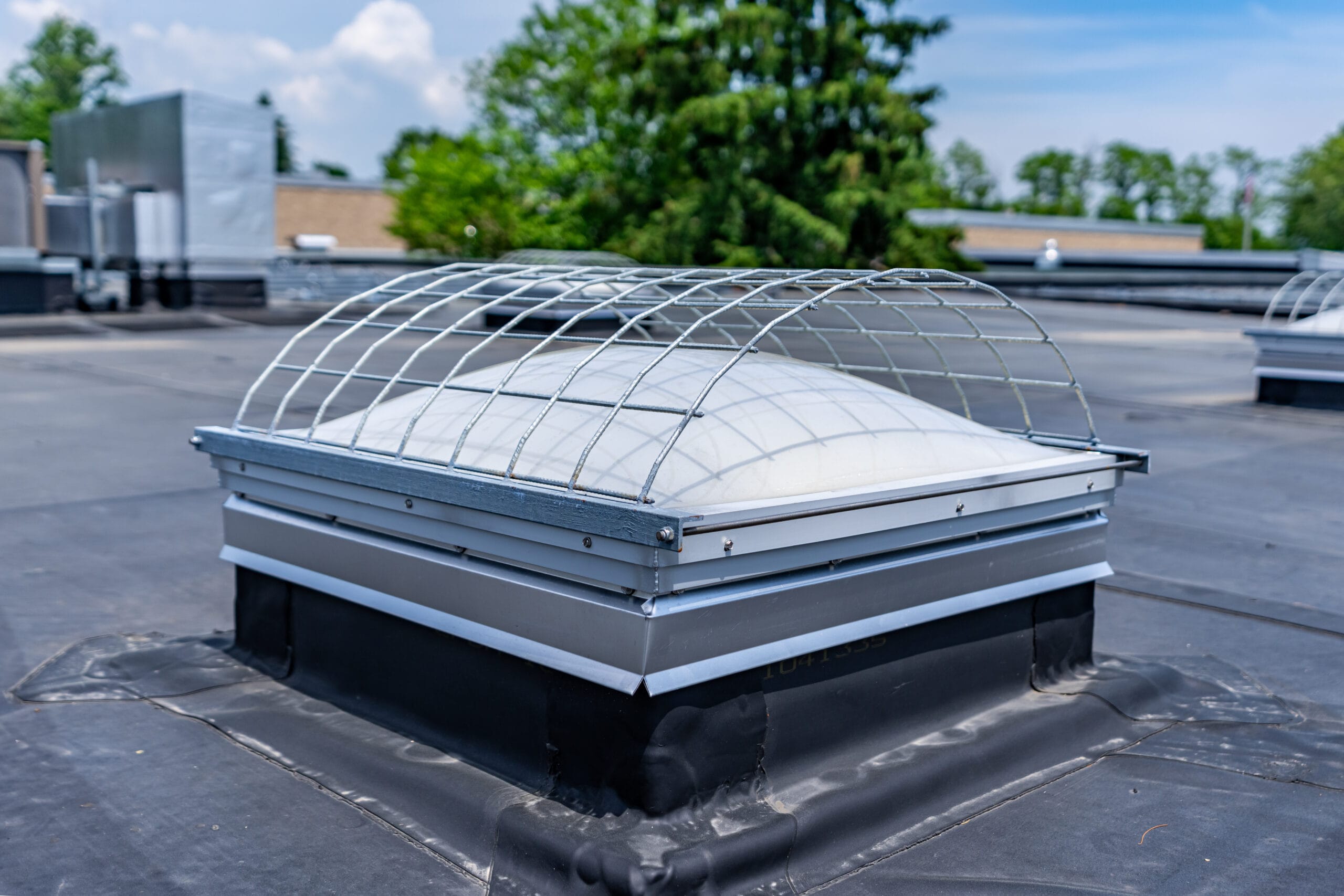
Dome skylight
These skylights are dome-shaped and are typically used on flat or low-sloped roofs. They are available in a variety of sizes and are often used in commercial settings such as factories, warehouses, and retail spaces.
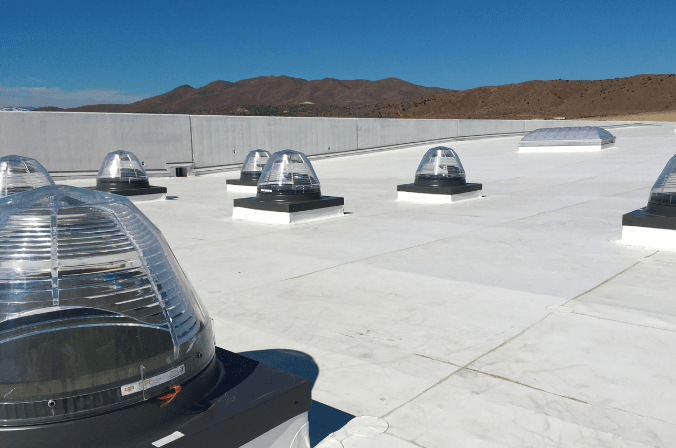
Tunnel Skylights
Also known as “light tubes” or “sun pipes,” these skylights are used to bring natural light into interior spaces that do not have access to direct sunlight. They are highly efficient and can be used in a variety of commercial settings.
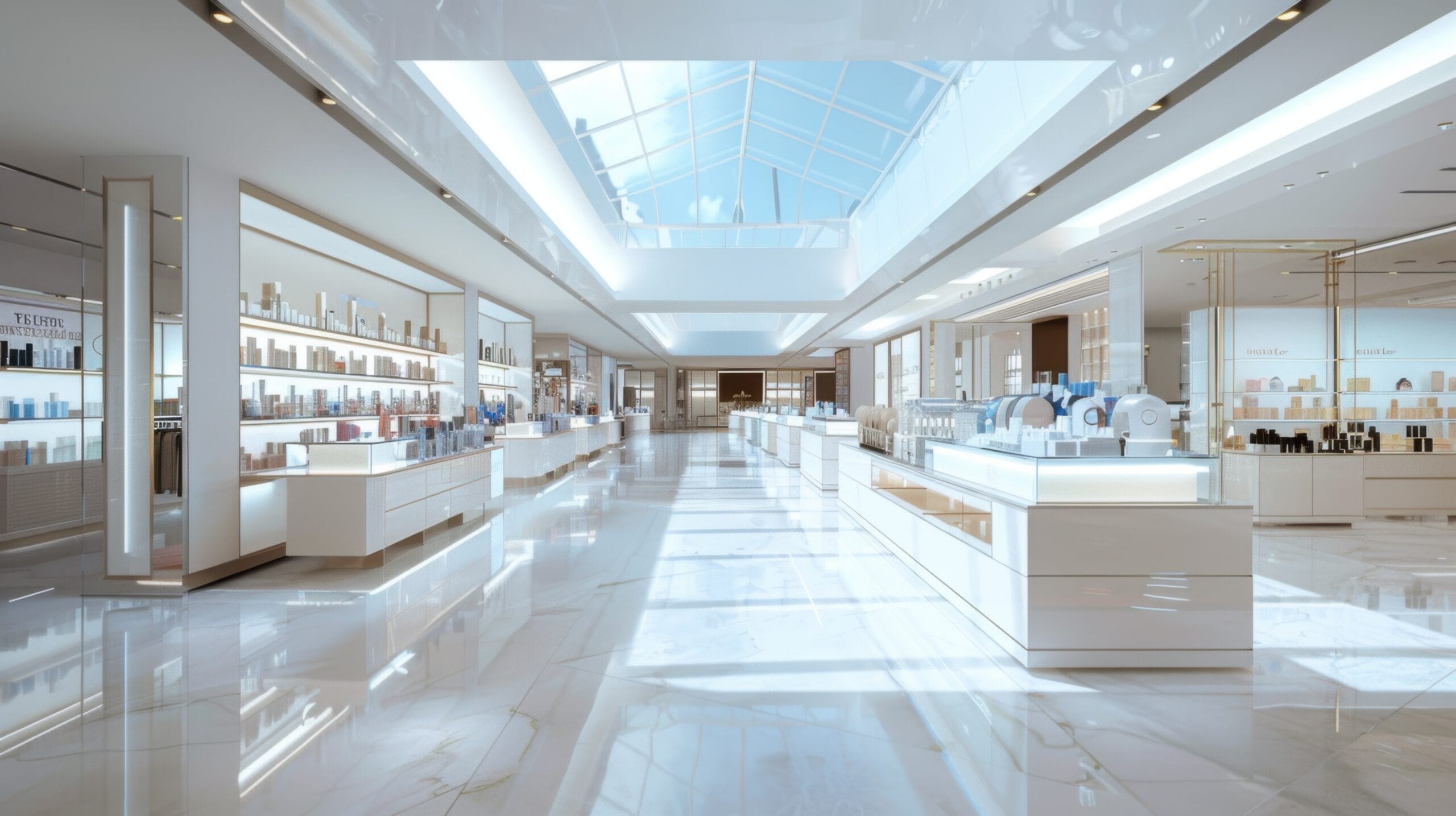
Pyramid Skylight
These skylights are dome-shaped and are typically used on flat or low-sloped roofs. They are available in a variety of sizes and are often used in commercial settings such as factories, warehouses, and retail spaces.
Pre-Installation Considerations
Before installing a skylight, we must focus on choosing the ideal location and ensuring compliance with building codes. These steps help avoid future issues and maximize the benefits of having a skylight.
Determining the Ideal Location
Choosing the right spot for a skylight is crucial for maximizing natural light and energy efficiency. We should consider rooms that benefit from additional sunlight, like conference rooms and common areas. Positioning is important for controlling heat gain, so we should avoid placing skylights directly facing the sun, especially in hot climates.
We also need to consider the roof’s pitch and orientation. A steeper pitch can offer better rain runoff, reducing potential leaks. Additionally, the structural layout of the attic or roof space must be checked to ensure sufficient room for installation without disturbing vital elements.
Structural Integrity and Building Codes
We must assess the roof’s strength to support the addition of a skylight. This includes evaluating the framing and ensuring it can bear the extra weight. Meeting local building codes is crucial for safety and legal compliance. We may need permits before starting.
Collaboration with a professional roofer is advisable to inspect the roof’s condition. They can identify any reinforcements required. They’ll help us navigate building code requirements and permit processes, ensuring that the installation meets safety standards and local regulations.


The Installation Process
In Plymouth, installing a skylight requires careful planning and precise execution. We need to gather the right tools, follow a clear installation guide, ensure proper waterproofing, and finish with attention to detail.
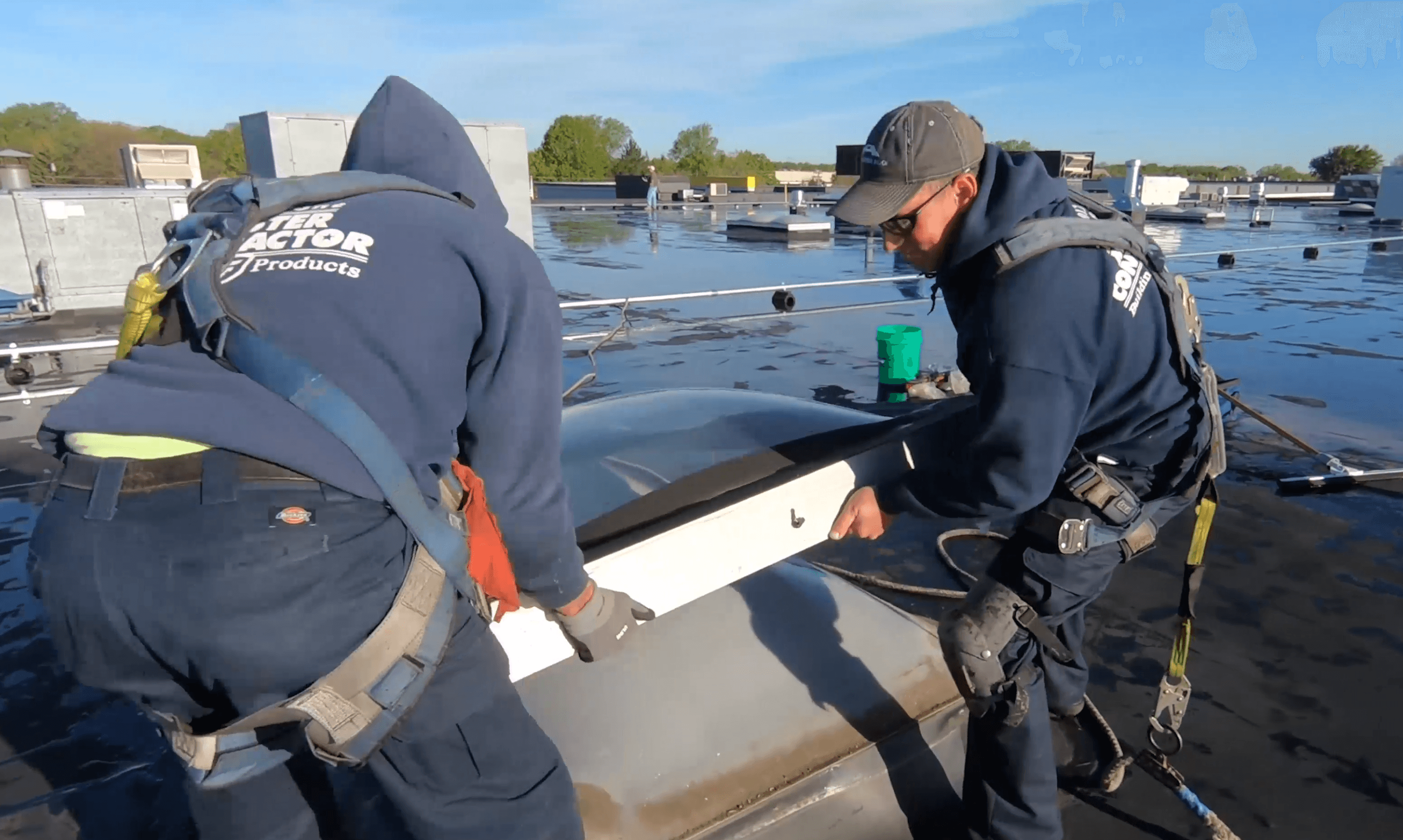

Tools and Materials Required
Gather essential tools like a drill, saw, tape measure, and ladder. Use high-quality materials including the skylight frame, glass, flashing kit, screws, nails, sealant, and insulation. Safety gear such as gloves and goggles is also crucial for protection.
Step-by-Step Installation Guide
Determine and mark the skylight position on the roof. Cut an opening slightly smaller than the frame. Insert and secure the skylight frame with screws, ensuring proper alignment. Attach the glass panel according to manufacturer guidelines, ensuring a secure fit.
Waterproofing and Insulation
Apply flashing around skylight edges, overlapping roof material to prevent leaks. Use sealant to fill gaps, creating a watertight barrier. Add insulation around the opening to maintain temperature stability and prevent drafts.
Finishing Touches
Finish the interior ceiling area around the skylight, possibly painting or matching trim. Clean the skylight glass for maximum light entry. Conduct a final inspection to ensure functionality and visual appeal.
Post-Installation Care and Maintenance
Once we have our skylight installed, taking care of it is crucial to ensure it stays in good condition. Regular maintenance not only enhances its lifespan but also ensures that it functions effectively.
Cleaning Skylights
To keep skylights clear, clean them at least twice a year using a soft cloth or sponge with soapy water. Avoid abrasive materials that could scratch the surface. For hard-to-reach areas, a gentle glass cleaner can help.
Inspecting Seals
Regularly check the seals around our skylight. If we notice any cracking or gaps, it might be time to reseal. This prevents leaks and maintains energy efficiency.
Spotting and Fixing Leaks
Leaks can be a common issue with skylights. Regularly inspect for any water damage or moisture around the edges. Look for signs of discoloration or peeling paint. If issues arise, applying a waterproof sealant designed for skylights can be beneficial.
Long-Term Durability Tips
To enhance the durability of your skylights, ensure proper ventilation to prevent condensation buildup inside. Installing shades or blinds can also protect against UV rays, reducing interior fading. Regular inspections are important for catching potential issues early.
Monitoring Mechanical Parts
If our skylight has mechanical parts such as shades or blinds, ensure they are functioning smoothly. Occasional lubrication can keep the mechanisms working effectively.

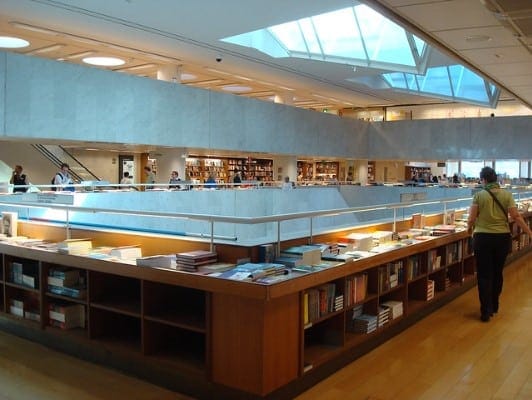
Skylight Roof Images
Frequently Asked Questions
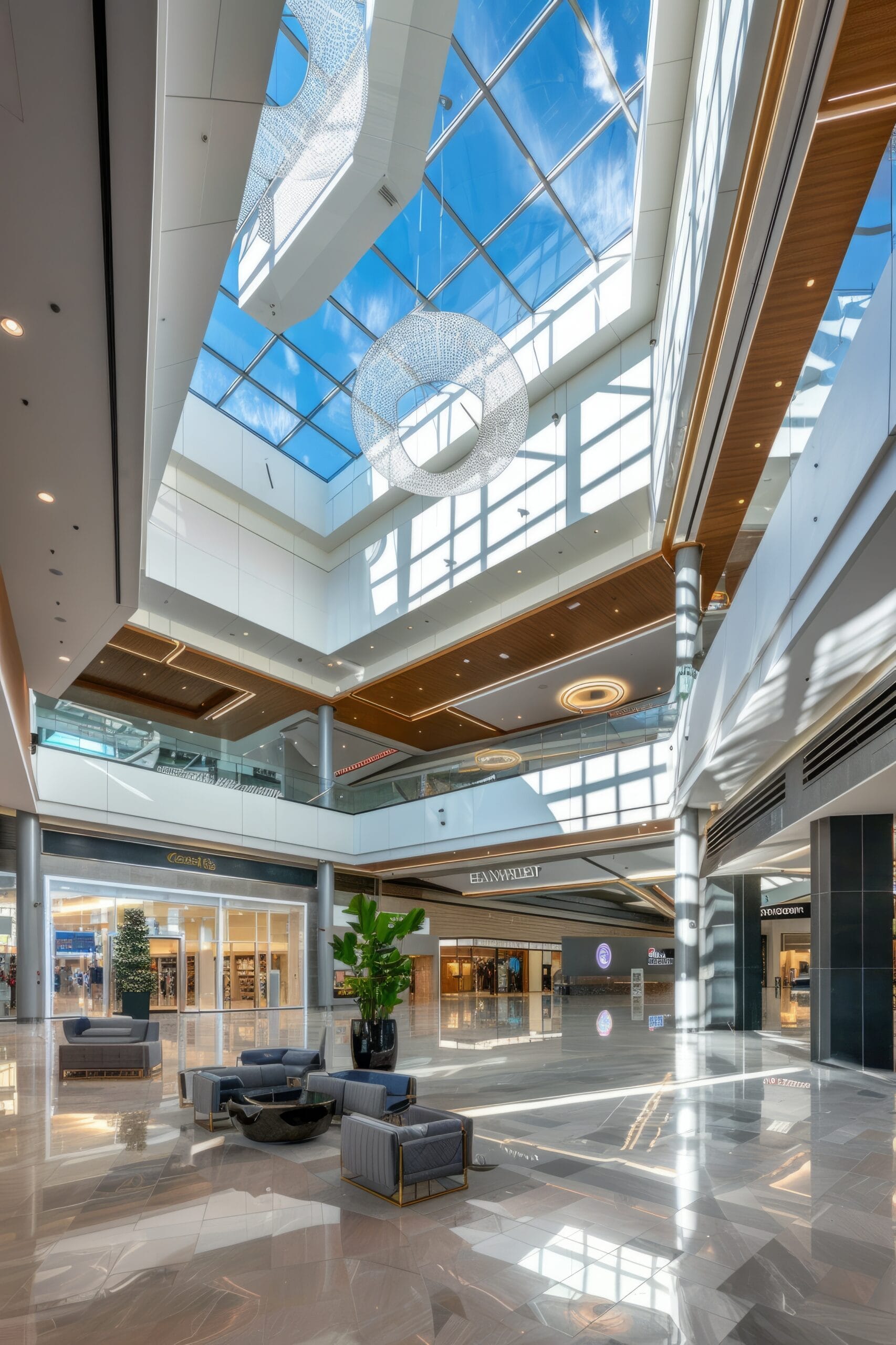
Do commercial skylights leak?
No. With Allweather Roof, you can rest assured that your skylights won’t leak. As one of the best skylight installation contractors in Plymouth, we follow the manufacturer’s guidelines, and take great care when adding the finishing touches, like sealing the opening against water leaks. So, you have nothing to worry about.
Are there any specific requirements for the skylights installation on a sloped roof?
Yes, there are certain requirements that must be taken into account when installing skylights on a sloped roof. These may include –
- Ensuring proper flashing and sealing.
- Reinforcing the roof to support the weight of the skylight.
- Selecting a skylight that is specifically designed for sloped roofs.
How often do commercial building skylights need to be replaced?
In general, skylights that are installed and maintained properly can last for several decades. The frequency at which commercial building skylights need to be replaced can vary depending on a number of factors, including –
- The type of skylight
- The quality of the installation
- The overall condition of the roof
How long does it take to install a skylight?
How much does it cost for a new skylight installation?
The cost will depend on several factors, including –
- The size
- The type of skylight (fixed or ventilation)
- The flat ceiling or vaulted ceiling
- The type of installation desired


